Find Help
More Items From Ergsy search
-

Planned caesarean section
Relevance: 100%
-
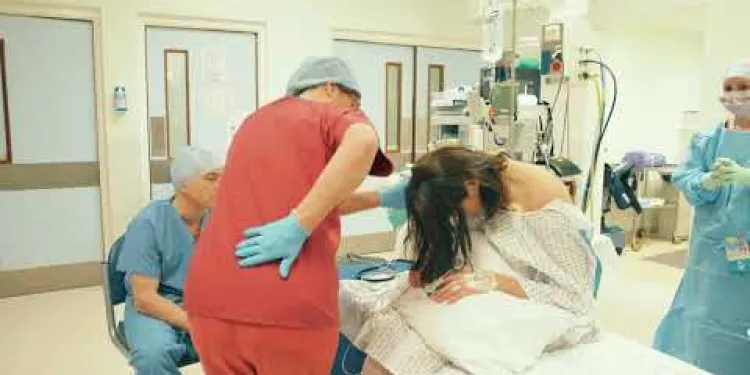
Having a planned caesarean section
Relevance: 91%
-

Having a Caesarean Section
Relevance: 79%
-

Spinal Anaesthesia for Caesarean Section
Relevance: 71%
-

Can my partner be with me during the Caesarean section?
Relevance: 62%
-

Is spinal anaesthesia safe for a Caesarean section?
Relevance: 62%
-
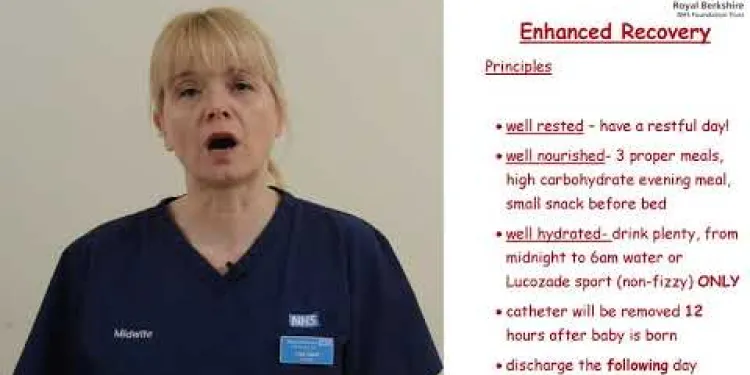
Pre operative Information for Planned Caesarean Birth
Relevance: 61%
-
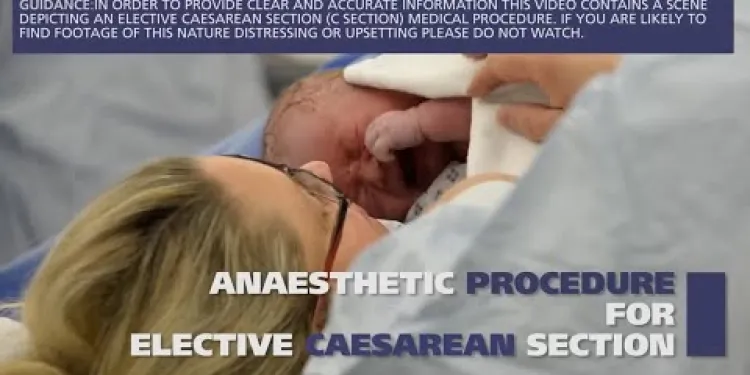
Anaesthetic procedure for elective caesarean section (C section)
Relevance: 60%
-

Can I have a natural birth after a Caesarean section?
Relevance: 59%
-
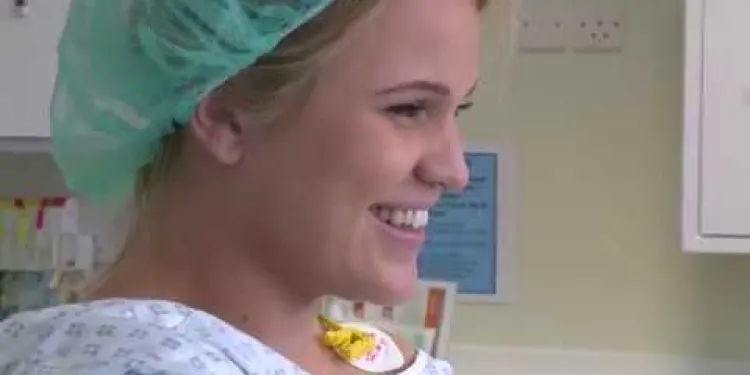
Your Caesarean birth
Relevance: 53%
-

Can I breastfeed immediately after a Caesarean section under spinal anaesthesia?
Relevance: 52%
-

What is a Caesarean birth?
Relevance: 49%
-

Why might a Caesarean birth be necessary?
Relevance: 42%
-

Children Act 1989 section 20 - Legislation
Relevance: 32%
-

Can I breastfeed after a Caesarean birth?
Relevance: 32%
-
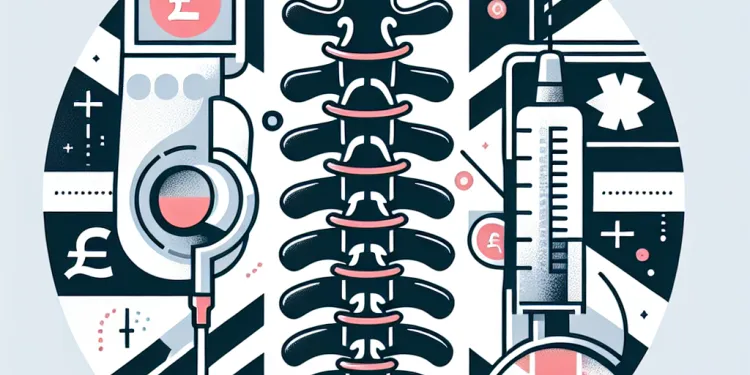
What are the alternatives to spinal anaesthesia for a Caesarean section?
Relevance: 31%
-

How long does it take to recover from a Caesarean birth?
Relevance: 24%
-

Student Finance: Should I pay more? | Plan 1 & Plan 2 | SF Explained
Relevance: 24%
-

Planning for your funeral
Relevance: 24%
-

What is an asthma action plan?
Relevance: 22%
-

What is an Education, Health and Care Plan (EHCP)?
Relevance: 22%
-

Can a robo-advisor help with pension planning?
Relevance: 21%
-

Can funeral directors offer payment plans?
Relevance: 20%
-

Do water companies have long-term infrastructure plans?
Relevance: 20%
-

Wills, Probate and Tax Planning in the UK
Relevance: 20%
-

How can I plan for future care needs?
Relevance: 20%
-

How often should I review my pension plan?
Relevance: 20%
-

The NHS Long Term Plan for learning disability and autism
Relevance: 19%
-

Do insurance plans cover the cost of self-testing tools?
Relevance: 19%
-

Could my payment plan affect how overpayments are handled?
Relevance: 19%
-

What is the role of independent financial advisors in pension planning?
Relevance: 19%
-

How will the changes in pension age affect retirement planning?
Relevance: 18%
-

Planning Your Funeral in Advance? | Expert Tips from Celebrants
Relevance: 18%
-

The Different Roles in Sexual Health and Family Planning UK
Relevance: 18%
-

What factors determine the treatment plan for prostate cancer?
Relevance: 18%
-

What is the new planned state pension age after 2028?
Relevance: 17%
-

NHS Winter Preparedness Plans Unveiled Amid Rising Seasonal Pressures
Relevance: 17%
-

How can I plan efficiently to mitigate inheritance tax?
Relevance: 17%
-

Is a C-section a common procedure in the UK?
Relevance: 17%
-

Harshi’s learning disability annual health check and health action plan
Relevance: 17%
Planned Caesarean Section at St Michael's Hospital
Introduction
St Michael's Hospital in the United Kingdom offers a comprehensive planned caesarean section service, tailored to ensure the health and well-being of both mother and baby. Opting for a planned caesarean can provide peace of mind for those who have medical conditions or specific preferences regarding the birthing process.
Preparation and Pre-operative Care
Prior to your caesarean section, you will have a detailed consultation with your obstetrician and anaesthetist at St Michael's Hospital. This is to discuss your medical history, the procedure itself, and any questions or concerns you may have. You will also undergo pre-operative tests, such as blood tests and possibly an ultrasound, to ensure you are in optimal health for the surgery. It's important to follow all pre-operative instructions, including fasting guidelines and any medication adjustments.
The Procedure
A planned caesarean section at St Michael's Hospital typically begins with the administration of anaesthesia, most commonly an epidural or spinal block, to ensure you are comfortable and pain-free during the procedure. The surgical team will make a horizontal incision in the lower abdomen and uterus to safely deliver your baby. The entire process usually takes about 45 minutes to an hour, and you will be awake and able to see your baby immediately after birth, barring any complications.
Post-operative Care and Recovery
After delivery, you and your baby will be moved to the recovery area where medical staff will monitor your condition closely. Pain relief will be provided as needed, and you'll also receive instructions on caring for your incision. It's important to take it easy and avoid strenuous activities during the initial recovery period. The average hospital stay after a planned caesarean at St Michael's is about 2-4 days, depending on your individual recovery progress.
Support and Follow-up
St Michael's Hospital ensures that comprehensive post-operative support is available to all mothers who undergo a planned caesarean section. This includes follow-up appointments to monitor healing, support with breastfeeding, and access to counselling services if needed. The experienced staff at St Michael’s are committed to providing compassionate care and support throughout your recovery journey.
Planned Caesarean Section at St Michael's Hospital
Introduction
St Michael's Hospital in the UK helps mums and babies have safe births with planned caesarean sections. This can help mums who have health issues or want a different birth plan feel calmer about having a baby.
Preparation and Pre-operative Care
Before your caesarean, you will meet with your doctor and anaesthetist. They will talk to you about your health, the surgery, and answer any questions. You might have tests like blood tests or an ultrasound to check you are healthy for the surgery. Remember to follow the instructions they give you, like not eating before the surgery and any changes to your medicines.
The Procedure
During the caesarean at St Michael's, you will get medicine to numb the pain. This is called an epidural or spinal block, and it helps you feel comfortable. The doctors will make a small cut in your lower tummy to deliver your baby safely. The surgery usually takes 45 minutes to an hour. You will be awake and can see your baby as soon as they are born, unless there are any problems.
Post-operative Care and Recovery
After your baby is born, you and your baby will go to a recovery area. Nurses and doctors will watch over you to make sure you are both okay. They will give you medicine if you feel pain and tell you how to care for your tummy cut. You should rest and avoid heavy activities while recovering. Most mums stay in the hospital for 2 to 4 days until they feel better.
Support and Follow-up
St Michael's Hospital looks after mums after their caesarean. They offer follow-up visits to check you are healing well, help with breastfeeding, and provide counselling if you need to talk. The staff at St Michael’s are caring and ready to support you as you recover.
Frequently Asked Questions
What is a planned caesarean section?
A planned caesarean section, also known as an elective caesarean, is a pre-arranged surgical procedure where a baby is delivered through an incision made in the mother's abdomen and uterus.
Why might a planned caesarean be recommended?
A planned caesarean may be recommended for various medical reasons, including multiple pregnancies, breech baby, placenta previa, previous caesarean delivery, or certain maternal health conditions.
How do I prepare for my planned caesarean at St Michael's Hospital?
Your healthcare team will provide specific instructions on how to prepare, which may include fasting from midnight before the surgery, attending a pre-operative assessment, and arranging for post-operative support.
What can I expect on the day of my caesarean?
On the day of your caesarean, you will need to arrive at the hospital at the scheduled time. You will be admitted, given a hospital gown, and have your vital signs checked before being taken to the operating theatre.
Can my partner be present during the caesarean?
Yes, at St Michael's Hospital, your partner or a birth companion can usually be present during the procedure, unless there are specific medical reasons why this is not possible.
What type of anaesthesia will be used?
Most planned caesareans are performed under regional anaesthesia such as a spinal or epidural block, which numbs the lower part of your body while you remain awake. General anaesthesia is used in rare cases.
How long does the caesarean procedure take?
The procedure itself typically takes about 45-60 minutes, although the entire process, including anaesthesia administration and post-operative care, will take longer.
Will I feel any pain during the caesarean?
You should not feel pain during the procedure due to the anaesthesia. However, you may feel sensations of pressure or pulling.
What happens immediately after the birth?
After the birth, your baby will be checked by a paediatrician and you will both be monitored in the recovery room. Skin-to-skin contact and breastfeeding are encouraged as soon as possible.
How long will I stay in the hospital after a caesarean?
Typically, you can expect to stay in the hospital for around 2-4 days after the caesarean, depending on your and your baby's health.
How should I care for my caesarean wound?
Keep the wound clean and dry, follow your doctor's instructions on wound care, avoid lifting heavy objects, and watch for signs of infection such as redness, swelling, or discharge.
When can I resume normal activities after a caesarean?
Recovery times vary, but you should avoid strenuous activities and heavy lifting for about 6 weeks. Gentle activities like walking are encouraged to aid recovery.
What are the risks associated with a caesarean section?
Risks can include infection, blood clots, bleeding, and reactions to anaesthesia. Your healthcare provider will discuss these risks with you in detail.
Can I have a vaginal birth in the future after a caesarean?
Many women can have a vaginal birth after a caesarean (VBAC), but this depends on individual circumstances. Your healthcare provider will discuss your options with you.
Who should I contact if I have concerns after my discharge?
You can contact your midwife, GP, or the maternity unit at St Michael's Hospital if you have any concerns or questions after your discharge.
What is a planned caesarean section?
A planned caesarean section is when a doctor decides to deliver a baby through an operation. This happens before the mother goes into labor. The baby is born through a cut in the mother's tummy.
This might be done if the doctor thinks it's safer for the mom or the baby.
Pictures or videos about the operation can help you understand more.
Talking to a nurse or asking someone you trust can also help explain things.
A planned C-section, or elective caesarean, is a surgery that is planned ahead of time. In this surgery, the baby is born through a cut in the mother's tummy and womb.
Why might a planned caesarean be recommended?
A caesarean is when a doctor helps the baby come out through the tummy instead of the normal way. Sometimes, this is safer for the mom or baby. Doctors might say it’s a good idea if:
- The baby is not in the right position.
- The mom had a caesarean before.
- There are health problems for mom or baby.
If you're feeling unsure, you can:
- Ask your doctor questions.
- Use tools like pictures or videos about caesareans.
- Talk it over with someone you trust.
A planned caesarean is a type of surgery to help a baby be born. It might be a good idea for several health reasons. These can include having more than one baby at the same time (like twins), if the baby is not lying head down, if the placenta is in the way, if you've had a caesarean before, or if a mom has certain health problems.
How can I get ready for my planned caesarean at St Michael's Hospital?
Getting ready for a caesarean (C-section) means planning ahead. Here are some easy steps to follow:
- Talk to your doctor: Make sure you understand what will happen during the surgery.
- Pack a bag: Put clothes, snacks, and things you will need in the hospital in a bag.
- Ask someone to help: Have a family member or friend ready to help you after the surgery.
- Rest: Try to get plenty of sleep before the day.
- Use reminders: Write down what you need to do before the surgery. Stick the note where you can see it.
- Relax: Listen to music, draw, or do anything that helps you feel calm.
Tools that can help:
- A friend: Ask a friend to read and explain things with you.
- Pictures: Draw simple pictures to show each step.
Your doctor and nurses will tell you what to do before your surgery. You might need to stop eating and drinking after midnight before your surgery. You will need to see the doctor for a check-up before the surgery. Make sure someone is there to help you after the surgery.
What will happen on the day of my C-section?
On the day of your C-section, you must get to the hospital on time. You will check in, put on a hospital gown, and the nurses will check your health before you go to the operating room.
Can my partner be with me during the caesarean?
Your partner can be with you when you have the baby by caesarean. This can help you feel calm and supported.
If you have questions, ask your doctor or midwife. They can tell you what to expect.
Sometimes, the hospital may not allow it if there are special reasons. It's good to ask ahead of time.
You can use pictures or videos to learn more about caesareans. They can help you understand what will happen.
Yes, at St Michael's Hospital, your partner or someone you choose can usually be there with you. But if there is a medical reason, they might not be able to.
What kind of medicine will make me sleep during surgery?
Doctors use special medicine during surgery. This medicine makes you sleep so you don't feel pain. It's called anaesthesia.
Tip: If you have questions or feel worried, talk to your doctor or nurse. They can help explain.
Most planned C-sections are done with medicine that makes your bottom half numb. This can be a spinal block or an epidural. You will be awake but won't feel anything. Only a few times, doctors use sleep medicine for C-sections.
How long does a C-section take?
A C-section is an operation to help a baby be born. The operation usually takes about 45 minutes to 1 hour.
During the C-section, doctors make a cut in the mother's tummy to get the baby out. They do this carefully and safely.
Some people may find it helpful to use pictures or easy words to understand better.
If you have questions, a nurse or doctor can help explain more.
The procedure usually takes around 45 to 60 minutes. But, the whole process will take more time. This includes giving medicine to make you sleep (anaesthesia) and taking care of you after the procedure.
Will I feel pain during the C-section?
No, you should not feel pain during the C-section. Doctors will give you medicine to make sure you don't feel anything.
Tell your doctor if you feel anything. They will help make it stop.
Bring headphones or a music player to help you feel calm.
You should not feel pain because of the special medicine. This medicine is called anaesthesia. But you might feel some pushing or pulling.
What Happens Right After a Baby is Born?
When a baby is born, what will happen next?
After your baby is born, a special doctor for kids called a paediatrician will check your baby to make sure everything is okay. You and your baby will rest together in a special room. Try to hold your baby skin-to-skin (that means with no clothes in between) and start breastfeeding as soon as you can.
How long will I stay in the hospital after a caesarean?
After having a caesarean, you usually stay in the hospital for 2 to 4 days. This gives your body time to start healing.
Everyone is different, so some people might stay longer or go home sooner. Listen to your doctor and how your body feels.
Tip: It's important to ask questions if you are unsure. A family member or friend can help you understand what the doctor says.
You will usually stay in the hospital for about 2 to 4 days after a c-section. This depends on how you and your baby are doing.
How can I take care of my C-section cut?
If you had a C-section, you need to look after the cut. Here is how you can do it:
1. **Keep it clean:** Gently wash with soap and water. Pat it dry with a towel.
2. **Don't scratch:** Touching or scratching the cut can make it hurt more or get worse.
3. **Wear loose clothes:** Loose, soft clothes won't rub or press on your cut.
4. **Watch for problems:** If it turns red, swells up, or has pus, tell a grown-up you trust or your doctor.
5. **Take it easy:** Rest is important. It helps your body heal.
Ask someone to help you remember these steps. It is okay to ask for help. You can also use simple reminders like notes or alarms to remember what to do.
Keep your cut clean and dry. Listen to your doctor about how to care for your cut. Don't lift heavy things. Look out for signs of infection, like the cut turning red, getting puffy, or having a yellow liquid.
When can I start doing my usual activities after a C-section?
A C-section is a special kind of surgery to help you have your baby.
After a C-section, your body needs time to heal. This can take a few weeks.
It's important to listen to your body and rest when you need to.
Ask your doctor when it's okay to start doing things like:
- Walking and moving around
- Lifting heavy things
- Driving
You can slowly start doing these activities when your doctor says it's safe.
Tools that can help:
- Ask a friend or family member to help you with things around the house.
- Use pillows to get comfortable when resting.
Remember, it's okay to ask for help and take your time to get better.
Recovery time can be different for everyone. You should not do hard activities or lift heavy things for around 6 weeks. Easy things like walking are good and can help you get better.
What are the risks with a caesarean section?
A caesarean section is when a doctor cuts your tummy to help a baby come out. This can help when a baby can't come out the normal way.
This surgery can have risks. Risks are things that can go wrong. Here are some risks:
- The tummy or the place where the doctor cuts can hurt after the surgery.
- Sometimes there can be a lot of bleeding, like when you get a big cut.
- You might get an infection, which is when you get sick from germs.
- After the surgery, it can take time to get better and feel strong again.
- Sometimes future babies might need to come out the same way.
To understand better, drawing pictures or using storyboards can help. You can also ask someone you trust, like a family member or a nurse, to explain it to you.
There are some things that can go wrong, like getting an infection, having blood clots, or bleeding too much. Some people might also feel sick because of the medicine that makes you sleep during surgery. Your doctor will talk to you about these things so you can understand them better.
Can I have a vaginal birth next time after a C-section?
If you had a C-section before, you might still be able to have a vaginal birth in the future.
Talk to your doctor or nurse to learn more. They can help you understand what is best for you.
It's important to do what is safe for you and your baby.
If you have questions or feel worried, ask a trusted friend or family member to help you talk to your doctor.
A lot of women can have a normal birth after having a C-section before. This is called a VBAC. But whether you can do this depends on your own health and situation. Your doctor or nurse will talk to you about what you can do.
Who do I talk to if I'm worried after leaving the hospital?
If you feel worried or have questions after you leave the hospital, it's important to know who to talk to. You can:
- Call your doctor or nurse.
- Reach out to a family member or friend for help.
- Use a health website or phone line to ask questions.
Remember, it's okay to ask for help whenever you need it!
If you have any worries or questions after you leave the hospital, you can talk to your midwife or doctor. You can also call the maternity unit at St Michael's Hospital.
Useful Links
- Ergsy carfully checks the information in the videos we provide here.
- Videos shown by Youtube after a video has completed, have NOT been reviewed by ERGSY.
- To view, click the arrow in centre of video.
- Most of the videos you find here will have subtitles and/or closed captions available.
- You may need to turn these on, and choose your preferred language.
- Go to the video you'd like to watch.
- If closed captions (CC) are available, settings will be visible on the bottom right of the video player.
- To turn on Captions, click settings .
- To turn off Captions, click settings again.
More Items From Ergsy search
-

Planned caesarean section
Relevance: 100%
-

Having a planned caesarean section
Relevance: 91%
-

Having a Caesarean Section
Relevance: 79%
-

Spinal Anaesthesia for Caesarean Section
Relevance: 71%
-

Can my partner be with me during the Caesarean section?
Relevance: 62%
-

Is spinal anaesthesia safe for a Caesarean section?
Relevance: 62%
-

Pre operative Information for Planned Caesarean Birth
Relevance: 61%
-

Anaesthetic procedure for elective caesarean section (C section)
Relevance: 60%
-

Can I have a natural birth after a Caesarean section?
Relevance: 59%
-

Your Caesarean birth
Relevance: 53%
-

Can I breastfeed immediately after a Caesarean section under spinal anaesthesia?
Relevance: 52%
-

What is a Caesarean birth?
Relevance: 49%
-

Why might a Caesarean birth be necessary?
Relevance: 42%
-

Children Act 1989 section 20 - Legislation
Relevance: 32%
-

Can I breastfeed after a Caesarean birth?
Relevance: 32%
-

What are the alternatives to spinal anaesthesia for a Caesarean section?
Relevance: 31%
-

How long does it take to recover from a Caesarean birth?
Relevance: 24%
-

Student Finance: Should I pay more? | Plan 1 & Plan 2 | SF Explained
Relevance: 24%
-

Planning for your funeral
Relevance: 24%
-

What is an asthma action plan?
Relevance: 22%
-

What is an Education, Health and Care Plan (EHCP)?
Relevance: 22%
-

Can a robo-advisor help with pension planning?
Relevance: 21%
-

Can funeral directors offer payment plans?
Relevance: 20%
-

Do water companies have long-term infrastructure plans?
Relevance: 20%
-

Wills, Probate and Tax Planning in the UK
Relevance: 20%
-

How can I plan for future care needs?
Relevance: 20%
-

How often should I review my pension plan?
Relevance: 20%
-

The NHS Long Term Plan for learning disability and autism
Relevance: 19%
-

Do insurance plans cover the cost of self-testing tools?
Relevance: 19%
-

Could my payment plan affect how overpayments are handled?
Relevance: 19%
-

What is the role of independent financial advisors in pension planning?
Relevance: 19%
-

How will the changes in pension age affect retirement planning?
Relevance: 18%
-

Planning Your Funeral in Advance? | Expert Tips from Celebrants
Relevance: 18%
-

The Different Roles in Sexual Health and Family Planning UK
Relevance: 18%
-

What factors determine the treatment plan for prostate cancer?
Relevance: 18%
-

What is the new planned state pension age after 2028?
Relevance: 17%
-

NHS Winter Preparedness Plans Unveiled Amid Rising Seasonal Pressures
Relevance: 17%
-

How can I plan efficiently to mitigate inheritance tax?
Relevance: 17%
-

Is a C-section a common procedure in the UK?
Relevance: 17%
-

Harshi’s learning disability annual health check and health action plan
Relevance: 17%


